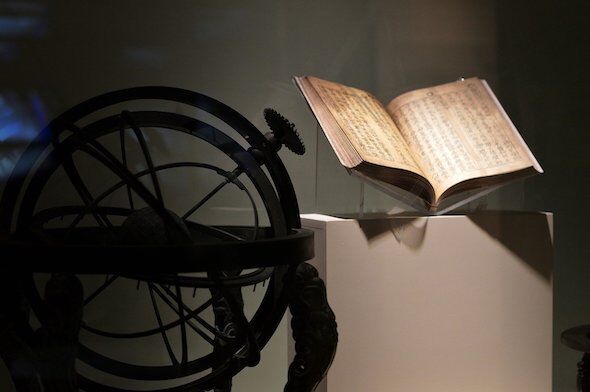India, the country’s eccentric and noteworthy feature is the diverse culture and knowledge among its people. India, in particular, is home to thousands of unique and distinct ethnic groups and indigenous communities. These communities play a vital role in upholding the country’s cultural heritage and civilization and occupying a major part of Indian history.
Traditional knowledge generally refers to the knowledge system that has been long embedded in the culture or tradition of indigenous, regional, or local communities. Culture, biological resources, and knowledge in traditional societies are closely interlinked and interwoven to form an intricate part of their heritage as well as provide a distinctive identity to the society. These kinds of knowledge are crucial for such communities’ existence and survival. They are based on accumulations of intricate observations and interactions with nature and their environmental surroundings.
What is also the need of the hour is the protection of such knowledge from misappropriation and misuse in order to preserve the distinctiveness of the identities of such communities.
However, the growing commercial use of these resources beyond the traditional context has resulted in an increased threat of misappropriation and misuse by third parties. Concerns expressed by aggrieved communities with regard to instances of robbing of identity have been discussed at international forums and formed organizations such as Intergovernmental Committee on Intellectual Property and Genetic Resources, Traditional Knowledge, and Folklore (IGC) by the World Intellectual Property Organization (WIPO) in the year 2000. However, there still exists a need for a system of protection at both regional and international levels designed to protect and preserve such traditional knowledge (TK) and traditional cultural expressions (TCE).
This has called some countries to develop their sui generis system to protect traditional knowledge. Sui generis is defined as something “of its own kind” that is special, unique, and different. Conventional forms of I.P.R are not sufficient to protect indigenous knowledge since they are based on the protection of individual property rights. In contrast, TK and TCE call for a larger collective because it involves communities.
The aim of incorporating a sui generis system in India for the protection of T.K and T.C.E could be done by modifying certain features of the existing intellectual property regime in order to accommodate the unique characteristics of its subject matter, i.e. traditional knowledge and traditional cultural expressions along with understanding the policy requirements, beneficiaries and examining the concept of equitable sharing and the principle of prior informed consent. Such a system can help legal rights associated with T.K and T.C.E and thereby create space for access and benefit-sharing to protect the diverse set of knowledge and information that Indian indigenous communities hold.
While drafting a sui generis system for the protection of traditional knowledge and traditional cultural expressions, it is important to analyze certain elements such as:
– Disclosure of the genetic and biological resources of the country of origin, preferably sui generis database protection system which will ensure accountability and tracking
– Provisions of prior informed consent and equitable benefit-sharing between the rightful custodian holders of such traditional knowledge and expressions and the third parties.
– Preservation of cultural identity and protection of communities from being threatened
– Understanding ownership and distinctiveness as well as the novelty of such traditional knowledge and expressions
– Provisions of customary international law
– Disclosure of existing traditional knowledge and expressions
– Issues of biopiracy and conservation of the environment
– Promotion of access and benefit-sharing
The kinds of intellectual property protection that can be incorporated in the sui generis system can be of two kinds-
1. Defensive protection– wherein people from outside the community holding such traditional knowledge will be prohibited from gaining intellectual property rights over the subject matter. This will safeguard the interests of the rightful custodian holders and prevent undue misuse. For example, India has a repository containing a database of all the traditional medicines that can be used as evidence for prior art when examining patent applications. Such an incident gave rise to a famous case wherein the US Patent and Trademark Office allowed registration of a patent for the use of the spice turmeric that could be used to treat bruises; the subject matter of treatment being turmeric has been long known to Indian traditional and regional communities The patent was later revoked.
2. Positive Protection– This type of protection seeks to grant legal rights to help and accredit local and regional communities to promote their traditional cultural expressions and knowledge, have it in their power to control its uses and utilization, and most importantly, control its benefits from the possible commercial exploitation.
Thus, recognizing the varied forms of traditional creativity and innovation as subject matters of protectable intellectual property will enable a balance between indigenous communities and the government to position a strategic policy to recognize such expressions and knowledge as well as control the use by third parties.
In today’s globalized world, fragmented protection fails to produce custodians of traditional knowledge and traditional cultural expressions with a suitable level of protection, and this is the reason why the national and regional laws that protect TCE and TK only have a limited impact and, thus calls for an international regime that extends protection beyond national borders by establishing bilateral or plurilateral agreements between those countries that share a common interest in protecting a particular traditional knowledge.
The establishment of an international legal framework for the protection of subjects of T.K and T.C.E will not only lay down a foundation for an arrangement that provides for the minimally acceptable standards of protection but will also ensure the creation of a larger legal certainty. An international framework will provide a certain degree of harmonization of national laws, ultimately making it simpler for right holders and custodians of such T.K and T.C.E to safeguard and trade their IP assets without the fear of misappropriation.



